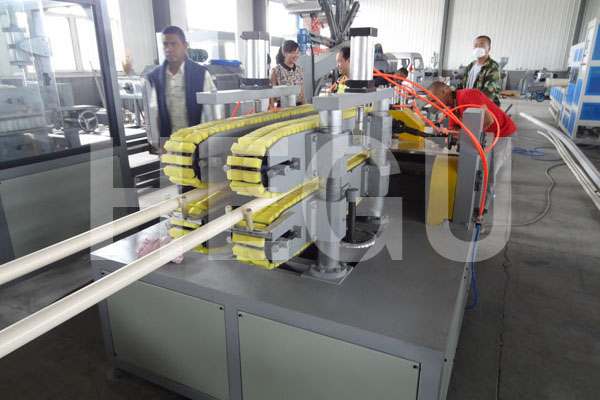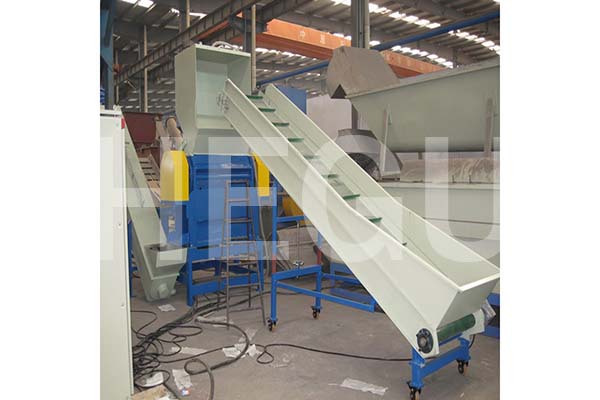Professional Tool Reviews for Pros
It’s not uncommon to want to run 120V electrical wiring underground. You may want to send power to your shed, workshop, or garage. Another common use is running power to a lamp post or an electric gate motor. In either case, you should be aware of a few underground wiring requirements in order to meet most current building codes. We show you how to install underground electrical wiring from one location to another. PVC edge banding sheet extrusion machine

The first question we always get asked is “How deep do we bury the wiring or cable?” That’s a great question. And the answer is that it depends on what wire you use and whether you run it within a conduit or not. Since most people ask the question so that they can meet a particular desire for maximum burial depth, let’s start there. Breaking it down by how deep you bury the underground electrical wiring when you install it, we have the following options:
If you ever want to use rigid metal conduit or even EMT in place of PVC, you can. Typically, we use gray 3/4-inch PVC for a single line. In addition, while the required burial depths listed above should be generally accurate—check local building codes first. You want to be absolutely certain you’re in compliance before you get started. We typically prefer using PVC conduit when running power to a remote location underground. That gives you a lot more protection over direct burial cable in the long run.
In the end, just understand your options and take the safest or simplest route depending on your situation. If you can get away without conduit and the wiring is in an area that isn’t liable to get in the way of future digging, then direct-burial cable might be best. If you’re running through the middle of your yard, a PVC or metal conduit might seem the better choice—even if it’s overkill.
We don’t provide a ton of steps to installing underground electrical wiring. Installing the wiring or conduit takes a lot of work—but not a lot of detailed instructions.
Don’t forget to plan ahead and call before you dig. You don’t want to hit any buried water lines, electrical lines, sewage drains, or anything else. In most municipalities, they will check your property within a day or two for free and when you call. Marking out critical lines with flags before you start really saves you a lot of hassle and headaches. Don’t skip this step!
We’ve dug a lot of trenches using shovels. Don’t do it if you value your time. If you have someone you desperately want to torture, or you’re only going several feet, then using a trenching shovel works just fine. If, however, you need to go a good amount of distance with your buried electrical cable, we recommend renting a trencher.
You can rent a 24-inch trencher in most places for less than $200 a day. You can even pay less if you only need it for a few hours. It saves you countless hours and hassle, so if you can afford it, grab one at your local tool rental store.
Using the trencher, plan your course and dig the trench where you plan to run your direct-burial cable or PVC pipe.
Cut your egress and ingress holes from the starting point (for example, your electrical panel) to the end of your run.
It helps to use what’s known as a PVC conduit outlet body (LB).
These make it easy to feed wire into a building (either the source or the destination garage or shop). You just remove the plate using the two screws and feed the wire as needed without having to worry about making a sharp right-angle turn at the point of entry.
Pro Tip: Use a heat gun to bend PVC conduit if you need to make a bend to get up against the house, garage, or workshop with your pipe.
Many times you can simply push your cable through minimal runs of PVC conduit. If needed, you can use a metal fish tape or even vacuum a pull line through the pipe and use that to pull the wires through a long run.
After pulling your wire, make your connections to the electrical panel and finish your conduit fittings. That includes securing the plates on your PVC conduit outlet bodies. Test your run, and pat yourself on the back for a job well done!
Nothing beats getting much-needed power to a shed or garage. Attack this type of project with gusto and reap the benefits. As always, consult or use a licensed electrician if things seem to be beyond your level of expertise.
When he's not playing with the latest power tool, Clint DeBoer enjoys life as a husband, father, and avid reader—especially the Bible. He loves Jesus, has a degree in recording engineering, and has been involved in multimedia and/or online publishing in one form or another since 1992.
Clint’s career has covered nearly the entire realm of audio and video production. After graduating at the top of his class with an Associates Degree in Recording Engineering, he began working for the famed Soundelux studios in 1994, one of the largest post-production companies specializing in audio for feature films & television. Working on a myriad of feature films, Clint honed his skills as a dialogue editor, foley editor, and sound designer. Years later, he moved into the expanding area of video editing, where he served as the company’s senior AVID video editor for three years.
Working for such clients as Universal Pictures, Hollywood Pictures, Paramount Home Entertainment, NASA, Universal Studios, Planet Hollywood, SEGA, NASCAR, and others, Clint DeBoer dealt extensively with client management as well as film & video editing, color correction, and digital video & MPEG compression. He also carries several THX certifications (Technician I and II, THX Video), and is ISF Level II Certified.
After founding the CD Media, Inc. publishing company in 1996, he went on to help start or grow several successful online publications, including Audioholics (as Editor-in-Chief for 12 years), Audiogurus, and AV Gadgets. In 2008, Clint founded Pro Tool Reviews followed by the landscape and outdoor power equipment-focused OPE Reviews in 2017. He also heads up the Pro Tool Innovation Awards, an annual awards program honoring innovative tools and accessories across the trades.
Crediting God and his excellent staff for the success of what is now the largest power tool review publication in the industry, Clint DeBoer hopes to see continued growth for the company as it rapidly expands its reach. Pro Tool Reviews critically reviews hundreds of hand tools, power tools, and accessories each year to help inform users about the best and newest products in the industry. Reaching everyone from the construction industry professional and tradesman to the serious DIYer, Pro Tool Reviews helps tool consumers shop better, work smarter, and stay aware of what tools and products can help put them at the top of their game.
So this year I finally decided to hack our Christmas tree stand so I could use a power tool to […]
Home Depot Path To Pro Network Connects Tradesmen With Employers Hiring a tradesperson requires research, whether you’re seeking a one-time […]
Knowing how to use a whetstone to sharpen a knife helps you get close and intimate to the work. It […]
Changing a Drill Bit Is Easier And Faster Than You Might Think Learning how to change a drill bit is […]
I did this recently for a customer when I installed furring strips and drywalled his detached garage. I had to deal with tree roots so I only went down maybe a foot with the gray plastic conduit. He will never dig there and it is not an area where you would even want to dig. I ran one 20 amp, 12v circuit for outlets, and a 240v circuit for a mini split air conditioner and heat. I reused an existing circuit for the lighting. I didn’t pull any permits so I didn’t have to get any inspections, but it’s a… Read more »
Emt is not approved for underground direct bury.
I don’t want to be negative, but there are several areas in your article that need corrections. I’ve noticed this in several I’ve seen posted from this site. As afor instance EMT(Electric Metalic Tubing) is NOT GRC (Galvanized Rigid Conduit) and they have very different rules and installation methods. Ablittle research can go a long way. Your site keeps asking me if I’m a robot and it’s annoying or I would help more.
Thanks for this! I am just about to (this weekend) run power from my workshop to a treehouse 70 feet away and this was a good refresher. The heat gun tip for bending the conduit is a fantastic trick.
As an Amazon Associate, we may earn income when you click on an Amazon link. Thanks for helping us do what we love.
See our Privacy Policy and Terms & Conditions.
Pro Tool Reviews is a successful online publication that has been providing tool reviews and industry news since 2008. In today’s world of Internet news and online content, we found that more and more professionals researched a large majority of their major power tool purchases online. That piqued our interest.
There’s one key thing to note about Pro Tool Reviews: We’re all about the professional tool user and tradesman!

Corrugated Sheet Extrusion Machine Copyright ©2008-2022 Pro Tool Reviews, LLC. All rights reserved.